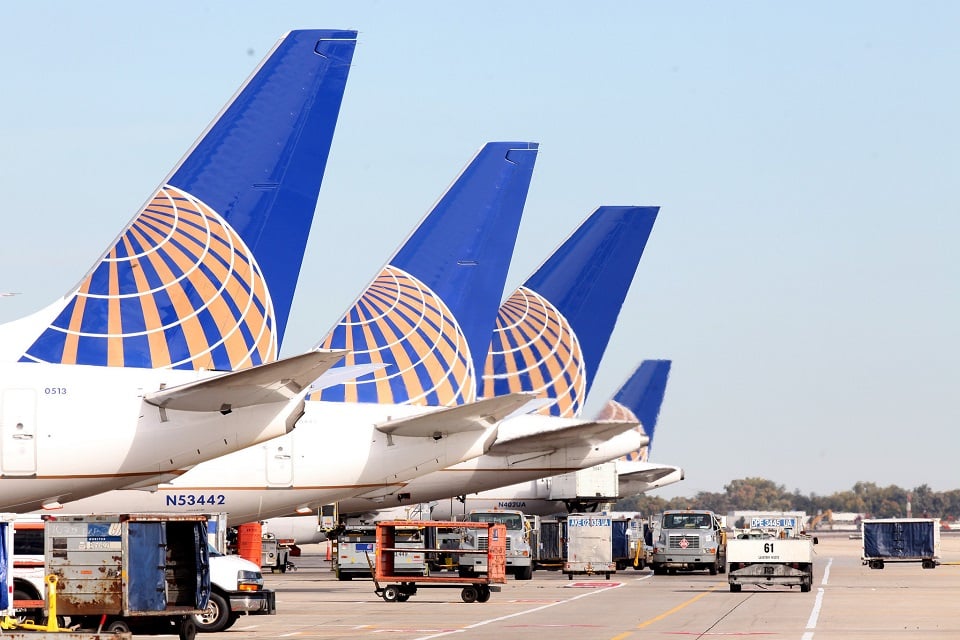Aerospace
United Airlines opens a new grab-and-go lounge in Denver for time-crunched travelers
United Airlines opens a new grab-and-go lounge in Denver for time-crunched travelers

A brand-new style of the lounge that United Airlines is introducing is one it hopes will be useful for rushed travellers. The Chicago-based airline will debut the new club on Saturday as demand for travel increases. Airlines are once again profitable thanks in part to consumers who are willing to pay more for trips, such as those that include access to airport lounges.
The United Club Fly lounge, which is roughly 1,600 square feet in size, is a “grab-and-go” setting with complimentary food options like sandwiches, wraps, and salads as well as more portable items like Noosa yoghurt cups and treats like Milk Bar Birthday Cake Truffles.
There is a self-serve coffee machine and a water bottle refilling station in addition to a barista who will serve made-to-order coffee drinks like cappuccinos. There are only 16 seats available, with eight additional people able to stand at the bar. Instead of being able to bring guests like at regular United Clubs, travellers must scan their boarding pass to enter.
According to the airline’s website, access to United Clubs is included with any international business class or transcontinental ticket or with a membership, which typically costs $650 per year for frequent flyer members. For members with higher tier status, it ranges from $550 to $600. Access is also available with some credit cards.
Carriers are intensifying their marketing campaigns to attract customers willing to pay more for travel and working to improve the appeal of their lucrative co-brand credit cards.
Why is Hong Kong giving away 500,000 plane tickets?(Opens in a new browser tab)
According to Henry Harteveldt, founder of the travel consulting company Atmosphere Research Group, “It’s a very wise move by United because airlines try to minimise the connecting time between flights for passengers.” “Once United launches this, I wouldn’t be surprised if other airlines start looking to do something similar.”

Aerospace
Boeing Transfers Rocket Stage to NASA, Paving Way for Human Moon Mission

Boeing has achieved a significant milestone by providing NASA with the second core stage of the Space Launch System (SLS) rocket.
This crucial component, crafted at NASA’s Michoud Assembly Facility (MAF), is set to propel the Artemis II crew into lunar orbit, marking humanity’s return to deep space after a 50-year hiatus.
The monumental Boeing-built rocket stage, the largest element of the Artemis II mission, will embark on a journey aboard the Pegasus barge, traveling 900 miles to NASA’s Kennedy Space Center.
Comparison of two legendary aircraft B777x vs B747 aircraft:Click here
Upon arrival, it will be meticulously integrated with other essential Artemis II components, including the upper stage, solid rocket boosters, and NASA’s Orion spacecraft within the iconic Vehicle Assembly Building. This intricate integration process is a vital step toward the eagerly anticipated Artemis II launch, slated for 2025.
“Boeing-built products helped land humankind on the moon in 1969, and we’re proud to continue that legacy through the Artemis generation,” remarked Dave Dutcher, vice president and program manager for Boeing’s SLS program. “Together, with NASA and our industry partners and suppliers, we are building the world’s most capable rocket and paving the way to deep space through America’s rocket factory in New Orleans.”
NASA, Lockheed Martin Reveal X-59 Quiet Supersonic Aircraft:Click here
The delivery of Core Stage 2 marks a significant achievement in the evolution of the SLS rocket. Towering over 200 feet and powered by four RS-25 engines, this core stage, coupled with two solid-fueled booster rockets, will generate a staggering 8.8 million pounds of thrust. This immense power is crucial to launching Artemis II and future missions into the vast expanse of space.
The SLS rocket stands unparalleled in its capability to transport both crew and substantial cargo to the moon and beyond in a single launch. Its extraordinary capacity will facilitate the delivery of human-rated spacecraft, habitats, and scientific missions to destinations including the moon and Mars, ushering in a new era of space exploration.
-

 Travel1 week ago
Travel1 week agoAir India to Expand US Operations with Three New Routes After a Decade
-

 Travel2 weeks ago
Travel2 weeks agoWhy We Should Avoid These Stamps in a Passport
-

 Airlines1 month ago
Airlines1 month agoInvestigations Reveal Fake Chinese Titanium in Boeing and Airbus Jets
-

 Tech4 weeks ago
Tech4 weeks agoChina’s CATL Plans 1,800-Mile Electric Plane Launch by 2027
-

 Airport3 days ago
Airport3 days agoTop 10 Largest Airports in the World by Size
-

 Aerospace4 weeks ago
Aerospace4 weeks agoChina’s Fighter Jets Turn Wings into Autonomous Drones
-

 Airlines4 days ago
Airlines4 days agoAir India Rolls Out A350s for Delhi-New York JFK and Newark Routes
-

 Defence3 weeks ago
Defence3 weeks agoBoeing Enhances Chinook with New Engines and Block II Upgrades at $96 Million







